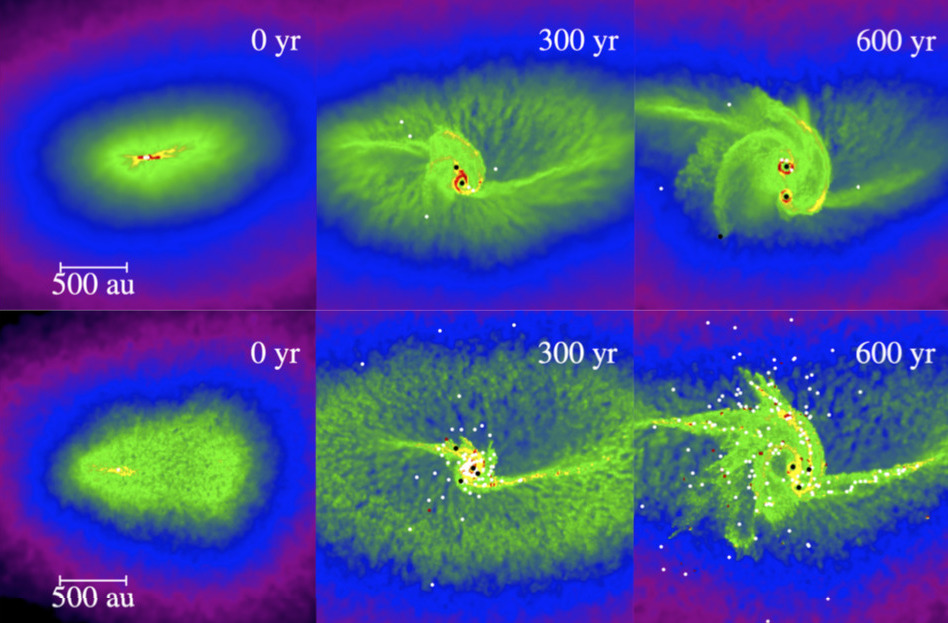Tsukuba Uchu Forum
112th Uchu Forum

Supermassive star formation via super competitive accretion in slightly metal-enriched clouds
Sunmyon Chon
Theoretical Astrophysics Group, University of Tohoku
Abstract
Recent distant quasar surveys covering z > 6 have revealed a number of supermassive black holes (SMBH). One of the models for the formation of these SMBHs is the formation of supermassive stars (SMSs) in the early universe, leaving behind a seed BH after a "direct collaps". In gas clouds, under special conditions such as strong radiation in the early universe, molecular hydrogen cooling is inhibited and SMS may form. The primordial (unpolluted by metals) nature of the gas clouds is one of the necessary conditions for SMS formation. Although it has been suggested that the cooling by dust leads to strong fragmentation in low-metallicity environments, quantitative predictions on the final masses of stars formed are few. We investigated whether SMSs can be formed in low-metallicity environments through numerical calculations. Specifically, we use the equation of state at Z < 10^-3 Z⊙ obtained by Omukai et al. (2008) to perform 3D hydrodynamical calculations. We find that, in a low-metallicity environment with Z < 10^-4 Z⊙, dust cooling at high densities is associated with gas cloud fragmentation, but SMS formation is not inhibited. This is because the dust cooling and gas fragmentation does not alter the global flow of the gas. A high accretion rate (∼ 1 M⊙ yr^-1 ) to the central star remains possible. After following the evolution for 10,000 years, we find the mass of the central star to be nearly independent of metal abundance, resulting in a mass of 6-8 × 10^3 M⊙. This result suggests that SMS formation is possible even in low-metallicity environments of Z < 10^-4 Z⊙ .



 和 英
和 英